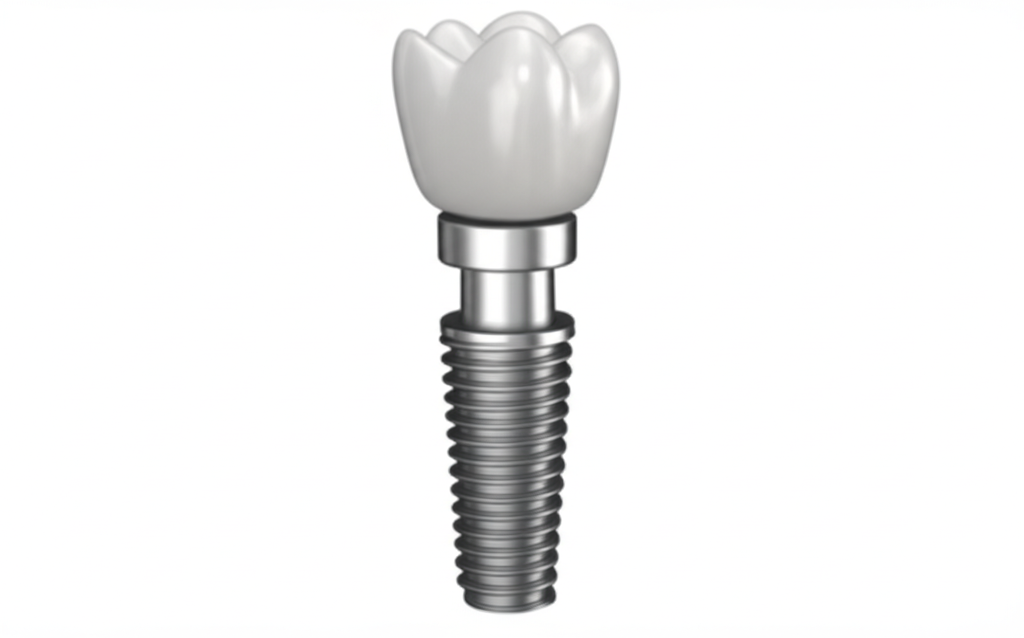
What Is Involved in a Dental Implant? A Complete Step-By-Step Guide
Curious about dental implants? This guide explains everything you need to know—from that first dentist visit all the way to your shiny new smile. Find out why understanding the dental implant process is worth your time. If you’re nervous, excited, or just plain curious about what gets done and why, this article’s for you.
Table of Contents
Introduction: Why Learn About Dental Implants?
Have you ever wondered what goes on when someone gets a dental implant? Knowing the steps in this process can help you feel ready and less worried. If you’re missing a tooth or thinking about replacing a damaged one, dental implants might sound scary or confusing. Trust me, understanding each stage makes everything a lot less scary!
You’ll find out how modern dental implants work, why they’re a great choice for many, and what you should expect before, during, and after the treatment. Read on: by the end, you’ll feel confident talking to your dentist or surgeon (like an oral surgeon or prosthodontist) about your options.
What Is a Dental Implant?
Let’s keep it simple: a dental implant is a small post, usually made of titanium or zirconia, that a dentist or oral surgeon puts into your jawbone. This post acts like the root of a real tooth. Later, a fake tooth (called a dental crown) goes on top. The whole thing ends up working and looking like a real tooth.
Parts of a Dental Implant
| Part | What It Does |
|---|---|
| Implant Post | The root part sitting inside your jawbone. |
| Abutment | Connects the implant post to the crown. |
| Dental Crown | The fake tooth you see in your smile. |
This system can also support a dental bridge or even full dentures!
Why Do People Choose Dental Implants?
Missing teeth can make eating hard and smiling feel strange. You may worry about your looks or feel shy at school, work, or parties. If you’ve ever had to deal with loose dentures, you know just how annoying that can be.
The problem is, a missing tooth doesn’t just affect how you chew—it can hurt how you feel about yourself, your confidence, and even how you talk.
Dental implants are a great solution. Unlike dentures or dental bridges, implants feel stable, don’t slip, and keep your jawbone healthy. You can bite an apple or laugh without worry. They’re made to last for years, often a lifetime with good care.
For more info about these benefits, check out the detailed page on dental implant options.
Step 1: The First Consultation – What Happens?
So, you’ve decided to ask your dentist about an implant. What comes first?
Detailed Oral Exam
Your dentist starts by taking a good look at your teeth, gums, and jawbone. They check if you have enough bone to hold an implant and if your gums are healthy.
Special Pictures
You’ll see some cool science in action—X-rays and maybe even a cone beam CT scan (CBCT). These pictures help the dentist find the exact spot to place the implant so you avoid the maxillary sinus or major nerves. It’s a little like using a digital map before building a house.
Talking About Your Health
Your dentist asks about your health history, any medicines you take, and your habits (like smoking). Conditions like diabetes or smoking can slow down healing.
Making a Special Plan
The dentist then makes a plan just for you. You’ll talk about costs, possible extra steps, the timeline, and any worries you have. Sometimes, you’ll even get a written treatment plan to look at when you get home.
Step 2: Pre-Implant Work—Will You Need More Than a Check-up?
Not everyone can get implants right away. Sometimes, extra steps are needed to get your mouth ready.
Tooth Extraction
If a damaged tooth is still there, it may need to be pulled first. This can be easy or take more time if the tooth is stuck, broken, or has an infection.
Bone Grafting
What if your jawbone isn’t thick or strong enough? If so, your dentist might suggest a bone graft. This means adding new bone (from your own body, a donor, or a special man-made material) into the jaw. Your body then builds new bone over months. Without this step, an implant might not heal the right way.
Sinus Lift
Implants in the upper jaw sometimes need a sinus lift. The maxillary sinus sits close to your upper jaw, and the dentist gently raises it and adds bone so the area is ready for an implant.
Gum Grafting
Healthy gums are important. If you don’t have enough, your dentist may suggest a gum graft. This gives more tissue for your implant to sit in.
Sometimes, these extra steps can add more time—a bone graft might mean waiting several months before your implant surgery.
Step 3: The Big Day—Dental Implant Surgery
Now it gets exciting! Let’s walk through your dental implant surgery.
Anesthesia
Don’t worry; you won’t feel pain. The dentist numbs the area with local anesthesia. If you’re nervous, options like IV sedation or nitrous oxide can help you relax.
The Surgery Steps
The whole thing often takes one to two hours, and you’ll go home soon after (sometimes with pain medicine or antibiotics).
If you’d like to learn how digital planning makes this step even smoother, I recommend this resource on digital dental lab improvements.
Step 4: Osseointegration—The Healing Stage
Let’s talk about osseointegration—a fancy word for your jawbone growing around the implant and locking it in place. This is one of the most important parts!
Why Is It Needed?
Unlike dentures or bridges, an implant needs to be super strong. Osseointegration provides this strength. Think of it like your body’s way of welding the implant post into your bone.
How Long Does Healing Take?
- Lower jaw: About 3-4 months.
- Upper jaw: 4-6 months (since the bone is not as thick).
- After Bone Grafting: Add 3-6 months.
During this healing time, you may get a temporary tooth, so you don’t have to walk around with a gap in your smile.
Step 5: Abutment Placement—What’s That?
Next comes the abutment. Not everyone needs a second small surgery—some people can get the abutment put on the same day they get the implant post. But if it’s a two-stage process, you’ll go back to your dentist.
What Happens?
Your dentist reopens the gums, attaches the abutment (the connector), and lets your gums heal around it. This is usually quick—often just a week or two of mild soreness.
Why Is It Important?
The abutment is like a bridge between the hidden, strong post and the part you can see—the new crown. Without this piece, your crown can’t be attached.
Curious how dental labs make custom abutments and crowns? Peek into the world of the implant dental laboratory for more details.
Step 6: The Final Crown—Getting Your New Tooth
Almost there! It’s time to finish your smile.
Impressions and Digital Scans
The dentist uses a mold material or a 3D digital scanner to create an exact model of your mouth. This model helps design a tooth that matches the rest of your teeth in color, size, and shape.
Making the Crown
Your crown is made in a lab, often using ceramics or zirconia. New technology, like CAD/CAM, makes sure it fits perfectly. Usually, this takes a week or two.
Attaching the Crown
Your dentist attaches the crown to the abutment, checks that your bite feels right, and—that’s it!—you’ve got your new tooth.
Some patients get a single tooth, others a bridge or even implant-supported dentures. For more about these options, see the experts at a crown and bridge lab.
Recovery and Long-Term Maintenance: What to Expect
The surgery is done, but your care doesn’t stop there.
What to Expect After Surgery
- Swelling and soreness are common for a couple of days.
- Bleeding should be very little and stop soon.
- Stick to soft foods—soups, yogurt, bananas—until your jaw feels better.
- Some doctors recommend ice packs, antibiotics, or pills to reduce swelling.
Keeping Implants Clean
A huge part of implant success is keeping your implant clean:
- Brush and floss every day to stop gunk from building up.
- Visit your dentist twice a year for cleanings and check-ups.
- Stay away from biting into hard things like ice or hard candy.
If you grind your teeth or have bruxism, your dentist may give you a night guard to wear, custom-made in a night guard dental lab.
Avoid Bad Habits
Smoking, not cleaning your teeth well, and skipping dental appointments can all lead to peri-implantitis, which is an infection around your implant and can cause it to fail.
The main point is: Implants can last decades—even a lifetime—if you take good care of them.
Who Makes a Good Candidate for a Dental Implant?
Are you wondering if you’re a good fit? Here’s what dentists look for:
- Good health overall: Long-term health problems like diabetes need to be under control.
- Strong jawbone: Enough bone so the implant stays in place.
- Healthy gums: No serious gum disease.
- Non-smoker: Smoking lowers the implant’s chance of success.
- Good oral hygiene: You’re willing to brush, floss, and visit the dentist regularly.
If any of these things need work, don’t worry—sometimes you can get ready with extra care or treatment. Your dental team will help you plan.
Dental Implant FAQs
How long does the whole process take?
A simple case (no bone grafts) can take about 4-9 months from start to finish. If you need a bone graft or other prep work, expect 9-18 months.
Does it hurt?
During the procedure, you won’t feel pain because of the anesthesia. Afterward, you might feel sore for a few days, a bit like after a tooth is pulled.
Are implants safe?
Dental implants have been used for decades. Their success rate is very high—over 95%! With good care, they can last a lifetime.
Is it expensive?
Implants cost a good amount of money. Expect $3,000-$6,000 or more for a single tooth, not including extra steps like bone grafts. Most people find the comfort, confidence, and chewing ability are well worth the cost.
What if I’m nervous?
Tell your dentist! Many clinics offer options to help you relax. Having all the facts (like you now do!) will also help you feel better.
Summary: Key Points to Remember
- Dental implant treatment is a process with a few steps, but each step has a purpose.
- The main stages are: consultation, prep work, surgery, healing, abutment placement, and the final crown.
- Bone and gum health are very important for success. Sometimes, extra steps like bone grafting or sinus lifts are needed.
- Most people say they are very happy, their implant feels natural, and the results last a long time.
- Taking care of your dental implant keeps it strong for years—maybe for life.
Don’t let missing teeth or past dental problems ruin your smile. Dental implants, backed by modern labs and technology, could be exactly the answer you need. If you want to learn about the full list of possible solutions, check out the page on dental problems to see how different treatments compare.
References:
- American Academy of Implant Dentistry (AAID)
- Clinical studies reported by the American Dental Association (ADA) and related dental journals
Remember: Talk openly with your dental team. There’s no such thing as a silly question when it comes to your health and your smile








